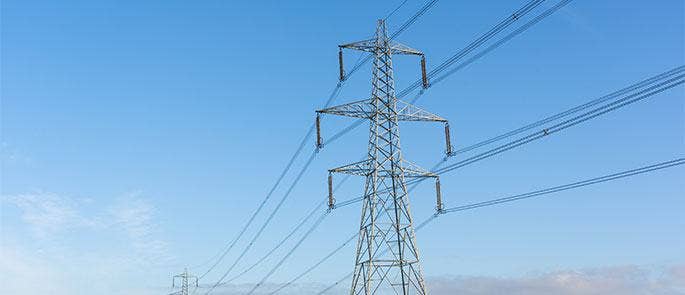Guidance on Electrical Burns
Everyone knows that electricity can be dangerous, but how many of us actually consider the dangers on a daily basis? When you’re using an electrical appliance at home or work, do you think about the hazards it can present? In this article, we’ll look specifically at the dangers of electrical burns, examining the causes, the different types of electrical burns and their signs, plus first-aid guidance on how to treat an electrical burn.
What is an Electrical Burn?
Electrical burns are a symptom of an electric shock and are caused by contact with a live electrical current. When the electrical current passes through the body, it heats the body tissue and can damage skin tissue and internal organs, sometimes causing severe harm.

Electrical burns are more commonly associated with sources of high-voltage electricity, such as power lines, HVAC units, electric ovens and electrical vehicle (EV) chargers. However, they can still occur with low-voltage electrical equipment, including household appliances and power tools, if the electrical current flows through the body for more than a few seconds.
Common Causes of Electrical Burns at Home
Whilst an electrical burn at home is unlikely, as most of the appliances used are low-voltage, you may come across a hazardous, live electrical supply in the following instances:
- Faulty switches.
- Frayed wiring.
- Exposed parts of appliances.
- Loose plug sockets.
If you plan to do any sort of DIY at home on, or near to, an electrical supply, then always turn off the mains power before you start to ensure no live current can flow through the area where you’re working. For example, if you’re fitting a plug socket or light fixture, drilling into a wall where there are wires or repairing an appliance.
Types of Electrical Burns
Electricity has the potential to cause various different types of burn injuries:
- Flame burns – this type of electrical burn occurs if you come into contact with something that has been ignited by a current of electricity. Electricity can cause a very hot spark which may set fire to anything nearby.
- Flash burns – this type of electrical burn commonly affects the surface of the eye and results after exposure to intense ultraviolet (UV) light. For example, the intense, bright flashback from a welding torch (also known as arc-eye) or from looking into the sun.
- Electric arc flash burns – this type of electrical burn occurs if a person comes into contact with an electrical arc – a continuous electric discharge that flows over the gap between conductors. This arc generates intense UV light and intense heat and commonly occurs if maintenance or repair is being carried out on live electrical equipment.
- Thermal burns – this type of electrical burn is caused when faulty, shorted or overloaded electrical equipment gets very hot and is then touched by a person’s skin. Both low and high voltage equipment can get very hot during operation and cause a thermal burn.
Both low-voltage and high-voltage electrical supplies have the potential to cause an electrical burn, so you should always take care when using equipment or doing work near to a supply of electricity. High-voltage burns generally cause more significant damage to the body but low-voltage burns can be just as painful and still require immediate medical attention.

Electrical Burns Signs and Symptoms
If you have suffered from an electrical burn, you may have obvious, visible damage to your skin. On other occasions, the damage may be mostly internal, and whilst the injury may not look serious on the surface, the damage to the body’s internal tissues and organs can be substantial. Always seek professional medical advice if you’ve received an electrical burn.
Some physical signs and symptoms of electrical burns to look out for include:
- Blistering of the skin.
- Peeling skin.
- Red, white or charred skin.
- Swelling.
- A tingling feeling.
- Numbness.
- Feeling weak or lightheaded.
Want to Learn More?
Need to learn more about electrical safety? Then take a look at our Electrical Safety training course which helps you to understand more about the risks and their control measures. Our Workplace First Aid course is also essential for a thorough understanding of how to respond to emergency situations, both in and out of the workplace.
How to Treat an Electrical Burn
If someone has received an electrical burn from a low-voltage electricity supply, you should begin by performing the first stage of the primary survey to ensure it’s safe to approach them, then switch off the power supply if safe to do so.
Never approach someone who is connected to a high-voltage electricity supply, as they could still have the current in their body which can pass onto anyone who approaches. For example, if someone has had a severe electric shock whilst working on a source of electrical wiring. In these instances, contact the emergency services immediately.

Once you’ve established that it’s safe for you to approach the casualty, the NHS advises that you should then:
- Remove any clothing near to the burnt area, but do not remove anything that’s stuck to the skin.
- Cool the affected area of skin with cool running water for 20-30 minutes. Do not use ice, ice water, cream or greasy substances to cool the burn.
- Once cool, cover the burn with cling film and raise the affected area to reduce swelling.
- Keep the person warm and comfortable but avoid covering the burn with clothing or blankets.
- Give the person painkillers, such as paracetamol, if they are in any pain.
- Take the person to the nearest hospital A&E department for medical attention or call the emergency services.
All electrical burns, whether low or high voltage, should be seen in hospital by a trained medical professional. Whilst you can provide basic first aid as detailed above, it’s important that the burn is assessed properly, as the damage may be bigger or deeper than it appears on the surface. If you’re unsure of how to respond to an electrical burn injury, then call the NHS 111 service for further advice.
Further Resources:
- Electrical Safety Training Course
- Workplace First Aid Course
- What are the Responsibilities of a First Aider?
- How to Carry Out the Primary Survey Using the DRABC Steps











